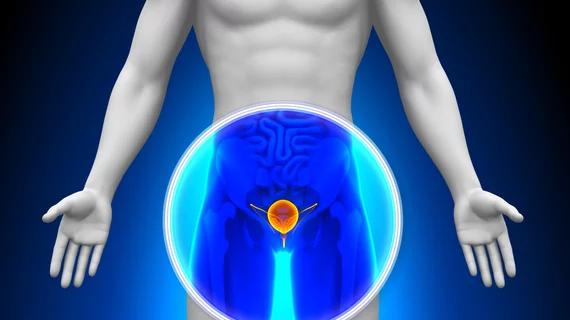How contrast-enhanced CT can help treat prostate cancer patients
Contrast-enhanced CT (CECT) can help providers identify high-grade prostate cancers, according to new research published in the American Journal of Roentgenology.
“Although many studies have shown the high sensitivity of multiparametric MRI in detecting clinically significant prostate cancer, CECT has been used mainly to look for nodal and distant metastases for disease staging,” wrote Guan Huang, department of medical imaging at St. Michael’s Hospital in Toronto, and colleagues. “CT has had almost no role in prostate cancer detection or primary tumor staging.”
To explore the possibility of reversing that trend, Huang et al. performed a retrospective analysis on 100 patients with proven prostate cancer who underwent staging CT of the abdomen and pelvis within three months of diagnosis. All patients were treated from January 2010 to December 2017. A group of 100 men with no known history of malignancy were also imaged so that they could at as a control. Two readers then independently examined the CT findings of each patient, assessing the likelihood of prostate cancer.
Overall, CECT helped the readers identify 83 of 100 patients with proven prostate cancer. Ninety-two control subjects were also correctly identified, giving CECT a sensitivity of 0.83, specificity of 0.92, positive predictive value of 0.91 and negative predictive value of 0.84.
In addition, the researchers found, CECT had a high interrater agreement with a kappa coefficient of 0.76.
“This suggests that a general radiologist should easily recognize focal abnormal enhancement in the prostate,” the authors wrote. “This should minimize the number of false-positive interpretations in prospective readings, thereby avoiding unnecessary workup and patient anxiety.”
The team did write that their research had certain limitations. The study cohort had a high prevalence of prostate cancer (50%), for example, and exclusions made while choosing patients means that the findings don’t apply to all patient populations.
Overall, however, “incidental detection of a focal area of increased enhancement in the periphery of the prostate at CECT … may represent a clinically significant caner and deserves further work-up.”

